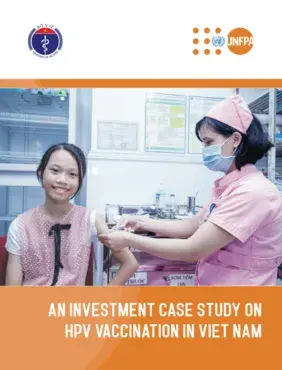Today, cervical cancer remains a public health concern that continues to threaten the welfare and well-being of women and the entire population. According to the 2018 report, cervical cancer is the sixth most common cancer affecting Vietnamese women, with nearly 4,200 new cases and 2,420 deaths. It has been projected that without any intervention, about 200,000 Vietnamese women will die from cervical cancer by 2070.
Evidence from international studies also confirms that a strategic combination of a sufficient coverage of HPV vaccination for adolescent girls and a sufficient coverage of cervical screening and an appropriate treatment for all women can eliminate cervical cancer as a public health problem within our lifetime. Unfortunately, in Viet Nam, the HPV vaccination rate and the cervical cancer screening rate are low. Our study in 2021 shows that only 12% of women and girls aged 15-29 are vaccinated, and only 28% of women aged 30-49 have been screened so far.
In collaboration with National Institute of Hygiene and Epidemiology (Ministry of Health of Viet Nam) and Victoria University and Daffodil Centre, a joint venture between New South Wales Cancer Council and the University of Sydney (Australia), UNFPA undertakes an Investment Case Study on HPV Vaccination in Viet Nam to generate quality evidence to inform national and sub- national policies on roll out of HPV vaccination for adolescent girls and cervical cancer screening for women.
This report presents a range of different scenarios of HPV vaccination, cervical cancer screening and treatment. The findings show that depending on the extent and composition of the program, the number of deaths from cervical cancer will be reduced by up to 300,000 by 2100. The programme will return between around 5 and 11 times its cost in economic benefits, and between 8 and 20 times its cost in combined economic and social benefits.
The report is available in English and Vietnamese. The infographic summary of the report is also available in English and Vietnamese.


